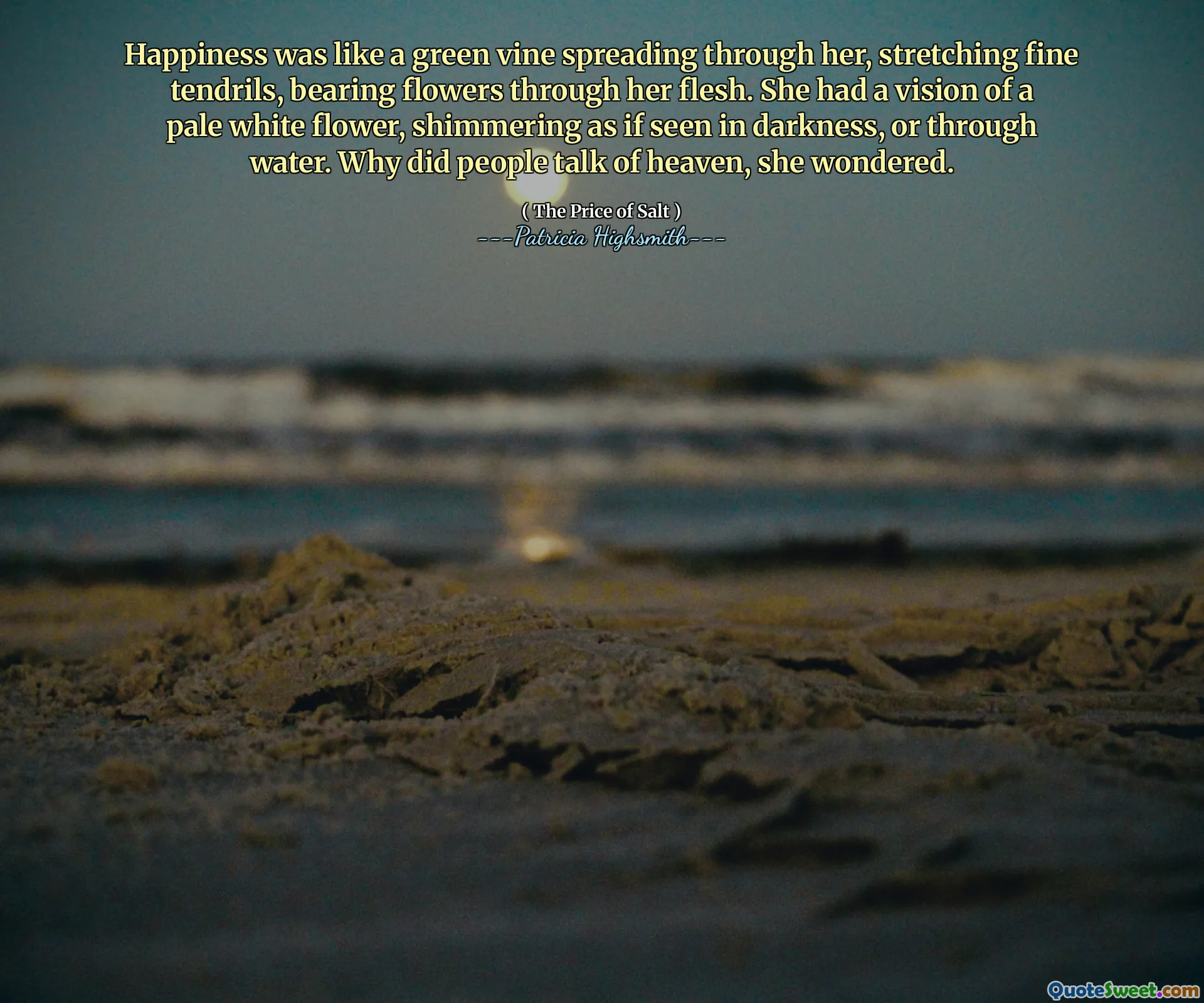
Happiness was like a green vine spreading through her, stretching fine tendrils, bearing flowers through her flesh. She had a vision of a pale white flower, shimmering as if seen in darkness, or through water. Why did people talk of heaven, she wondered.
This poignant excerpt vividly captures the intertwining of happiness with the human body and soul. The imagery of a green vine spreading through her suggests an organic, natural growth that is intrinsic to her being—an embodiment of joy that is alive, dynamic, and complex. The tendrils reaching outward symbolize how happiness can extend beyond initial feelings, subtly weaving into one's thoughts and sensations, almost like a living entity within her. The imagery of flowers passing through her flesh evokes a sense of delicate beauty and fragility, hinting at happiness's transformative and fleeting nature. The vision of a pale, shimmering white flower, perceived as if in darkness or underwater, introduces a layer of mystery and serenity—perhaps representing purity, hope, or elusive transcendence that lies just beyond direct perception. It raises questions on the nature of happiness and the human search for meaning, contrasted with the conventional concept of heaven. The character’s wonder about why people speak of heaven suggests a realization that the divine or ultimate happiness might be found within, rather than in an external paradise. It emphasizes the intimate, personal experience of joy and the yearning for something greater, intangible yet deeply felt. This poetic reflection invites readers to consider their own inner landscapes, the ways happiness grows and manifests, and how elusive beauty and fulfillment remain as eternal pursuits. The metaphor beautifully encapsulates the delicate, vibrant, and sometimes mysterious journey toward emotional and spiritual fulfillment.









